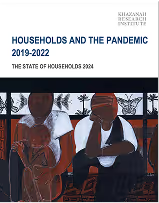
Despite very low measured inflation at the national level, lower income households have been negatively affected by the rising cost of living in the past few years.
The experiences of households in Malaysia are incredibly diverse. Household income - explored in the previous article - can only tell one side of the story. In this article, we supplement that analysis with the other side of the story: household expenditure.
Complaints about the rapid rise in cost of living is a common grievance in Malaysia, becoming a major topic of concern in any public discourse or engagement. However, the rise in inflation – reflected through consumer price index (CPI) - has been low. The average prices of goods and services have only risen an average of 2.7% annually over the last three years. Household expenditure as a percentage of household income has also decreased from 68% in 1993 to 58% in 2016. This means, on average, Malaysians have more savings remaining after expenditure compared to in 1993. Clearly these numbers do not reflect the sentiments on the ground, leading to accusations of these numbers being inaccurate or fabricated.
What if both statements are true? Digging deeper into the impacts of rising cost on the households of different income levels has revealed to us a much more nuanced picture.
.png)
While national analyses yield a positive outlook for households in Malaysia, they mask the different realities lived by lower income households compared to higher income households. Households earning below RM2000 in 2016 are spending around 95% of their income, increasing from 92% in 2014. This means that the savings left for these households have gone down from RM124 per month in 2014 to RM76 per month in 2016. In contrast, households earning above RM 15000 spend less than half their incomes, leaving them with savings of around RM13100 per month in 2016 before tax.
The divergence in experiences can also be seen through the difference in spending patterns between households of different income levels. Households earning above RM5000 have increased expenditure in both food at home and food away from home. However, the quantity consumed at home has reduced, replaced by food consumption away from home. Alarmingly, while households earning below RM5000 are also spending more on food at home and away from home, they have reduced the quantity of food from both sources. This means that as food prices rise, households earning below RM5000 are forced to spend more money on food, thus reducing the amount that they eat to meet ends meet.
The same cannot be said for higher income households. The rise in expenditure is mostly attributed to increasing or maintaining their state of living, as indicated by their expenditure patterns. For example, the quantity of recreation and cultural services of households above RM 8000 have increased between 2014 to 2016. With plenty of residual income to spare, these households are sheltered from shocks and uncertainties that lower income households experience.
The stark difference in household expenditure across income groups can illuminate some of the very real grievances and struggles that lower income households have in making ends meet. Understanding these changes is crucial for creating targeted policies to address the high costs of living. Hence, more in-depth research into the lives of the different segments of society is of utmost importance. With better data collection and analysis, we can more effectively alleviate the struggles of the lower income households. In the next article, we further our exploration of these divergent household experiences through an analysis of income inequality.















